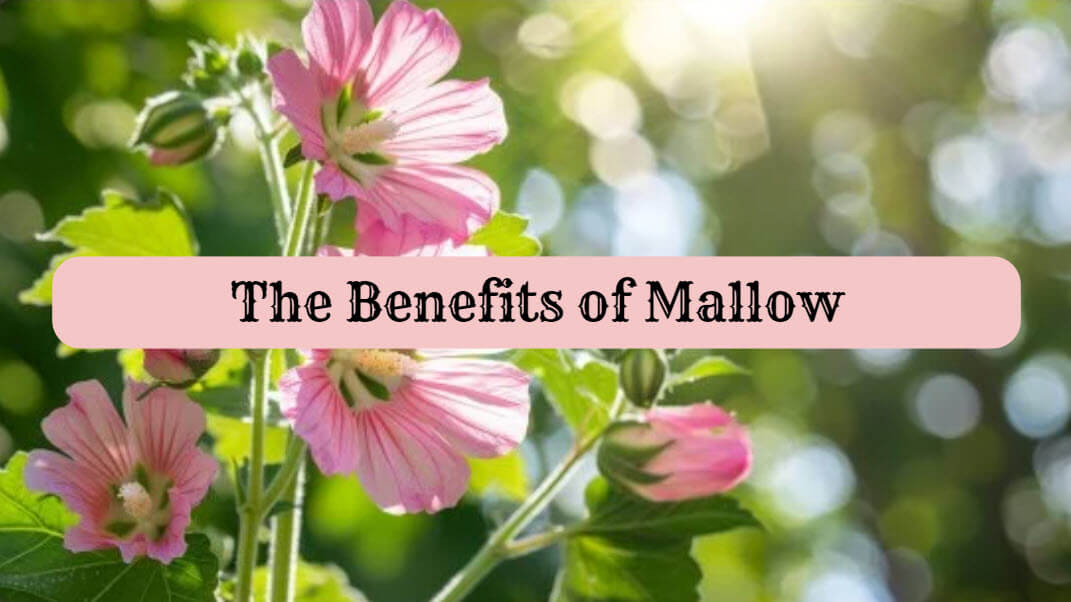In the vast world of plants, few have become as intertwined with human history and health practices as the common mallow and high mallow (Malva neglecta and Malva sylvestris).
These strong and widely spread plants are part of the Malvaceae family, known for their significant cultural, medicinal, and culinary influences throughout history. With rich folklore, historical use, and growing scientific research backing their benefits, these plants offer a unique blend of tradition and modernity in promoting health and well-being.
Table of Contents

Utilization and Health Advantages
Malva Neglecta (Common Mallow)
Digestive Support: Common mallow’s mucilaginous properties are incredibly beneficial for digestive health. Its gentle soothing qualities can relieve irritation in the digestive tract, making it a great natural remedy for conditions like gastritis, irritable bowel syndrome (IBS), and heartburn. Making a tea from the leaves and flowers can provide a protective layer on the digestive lining, aiding in healing and comfort.
Respiratory Relief: Common mallow also has a significant impact on respiratory health due to its expectorant properties. It can help alleviate symptoms of common colds, bronchitis, and sore throats. The mucilage helps soothe irritated mucous membranes and helps in getting rid of mucus, making breathing easier. Drinking a warm tea or syrup made from the plant can help relieve coughs.
Anti-inflammatory Properties: The plant’s anti-inflammatory effects help reduce swelling and pain in conditions like arthritis and muscle aches. Applying a poultice made from the leaves or drinking the tea can help reduce inflammation both internally and externally.
Immune System Support: Common mallow is rich in antioxidants, which can strengthen the immune system, protecting the body from oxidative stress and helping fight infections. The presence of vitamins A and C, along with minerals like iron and magnesium, contributes to its immune-boosting abilities.
Urinary Tract Health: Malva neglecta has been traditionally used to support urinary tract health. It can act as a diuretic, helping to flush out toxins and reduce the risk of urinary tract infections. Its soothing properties can also relieve discomfort from urinary tract inflammation.
Skin Care: Common mallow is valued for its skin-healing properties. It can hydrate and soothe skin irritations, eczema, and dermatitis due to its high mucilage content. When applied topically, it can help heal wounds, insect bites, and burns, promoting skin regeneration and protecting against infections.
Antioxidant-Rich: The plant is a rich source of antioxidants, which can fight free radicals and promote overall health. This antioxidant activity supports cardiovascular health by maintaining healthy blood pressure levels and reducing cholesterol.
Culinary Uses: Common mallow is not only beneficial for health but also edible and nutritious. The leaves, stems, and flowers can be added to salads, soups, and stews, providing nutrition and health benefits to everyday meals.
Incorporating Malva neglecta into your wellness routine or diet offers a holistic approach to health, drawing on centuries of traditional use supported by modern research. Whether used for its medicinal properties or as a nutritious addition to meals, common mallow stands out as a versatile and valuable plant in the realm of natural health and wellness.
Malva Sylvestris (High Mallow)
- Anti-inflammatory Power: Malva sylvestris is known for its strong ability to reduce inflammation, making it a great remedy for various health issues. The leaves and flowers contain special compounds that help reduce swelling and ease pain. This makes it especially helpful for soothing sore throats, stomach problems, and irritated membranes in the body.
- Breathing Comfort: The plant’s ability to help clear phlegm and ease coughs makes it helpful for respiratory problems. Teas and syrups made from high mallow can help with symptoms of the common cold, bronchitis, and even asthma, providing natural relief for people with breathing issues.
- Skin Healing and Care: High mallow’s soothing properties aren’t just good for the stomach – they’re also great for the skin. Creams and lotions made from the plant can help wounds heal faster, reduce inflammation in conditions like eczema or dermatitis, and provide relief from insect bites and burns. Its moisturizing qualities make it a great ingredient in products for hydrating and calming the skin.
- Antioxidant Benefits: Malva sylvestris contains powerful antioxidants that protect the body from damage caused by harmful molecules. These antioxidants can help prevent long-term illnesses, boost the immune system, and keep us healthy overall. Drinking high mallow in teas or other forms can help us stay strong and fight off different health problems.
- Digestive Health: Like its cousin, Malva sylvestris can help calm and protect the digestive system. Its special substances can coat the stomach and intestines, providing relief from issues like indigestion, stomach inflammation, and ulcers. By soothing the digestive system, high mallow helps us digest food more easily and feel better when our stomachs are upset.
- Urinary Tract Support: High mallow’s ability to increase urine production helps the body get rid of toxins and bacteria. This is especially helpful for preventing urinary tract infections (UTIs) and stopping kidney stones from forming. By flushing out harmful substances, high mallow keeps our urinary system healthy.
Including Malva sylvestris in your wellness routine, whether through teas, skin treatments, or dietary supplements, can provide a wide range of health benefits. Its rich makeup and diverse therapeutic qualities make it a valuable herb for natural health and well-being. As with any herbal remedy, it’s important to consult with a healthcare professional before adding high mallow to your health routine, especially if you have existing health issues or are taking medications.

Leveraging the Benefits of Malva Neglecta and Malva Sylvestris
To fully benefit from Malva neglecta and Malva sylvestris, it’s essential to understand how to use them wisely. Both plants can be used in different ways, including making teas, poultices, and infusions, each method extracting their beneficial properties uniquely.
Preparing Teas and Infusions
Teas: For both common and high mallow, making tea is a popular method. To make a therapeutic tea, steep 1-2 teaspoons of dried leaves or blossoms in boiling water for 10-15 minutes. This gentle process helps release healing compounds ideal for soothing digestive and respiratory issues.
Infusions: Infusions are great for extracting nutrients from the leaves. Put a handful of fresh or dried leaves in a container, cover them with boiling water, and let them steep overnight. Strain the next morning for a potent infusion, which can be used for skin care or as a base for skincare products.
Formulating Poultices for Dermatological Application
Poultices are great for applying directly to the skin to soothe irritation or help wounds heal faster. Grinding fresh leaves from either mallow plant into a paste, putting it right on the affected area, and covering it with a bandage works well. This method is especially helpful for eczema, minor burns, and insect bites.
Preservation and Storage
Drying is the best way to keep mallow leaves and flowers fresh. Spread them out in a single layer on a drying rack in a cool, airy place away from the sun. Once they’re completely dry, store them in tightly sealed containers in a cool, dark spot to maintain their healing properties.
Although Malva neglecta and Malva sylvestris have traditionally been used for their health benefits, this article is not medical advice. Always consult with a healthcare provider before starting any new treatment or using herbal supplements, especially if pregnant, nursing, or taking medication.
Concluding Notions
Malva neglecta and Malva sylvestris, with their gentle yet powerful healing properties, show how nature supports human health and wellness. By understanding how to use them responsibly and sustainably, we can easily include these versatile plants in our health routines, connecting ancient herbal knowledge with modern health practices. As we continue exploring botanical medicine, let these beneficial plants inspire a stronger connection with nature, making our lives healthier and happier.
If you need any further information or assistance with this article, don’t hesitate to Contact Us




















